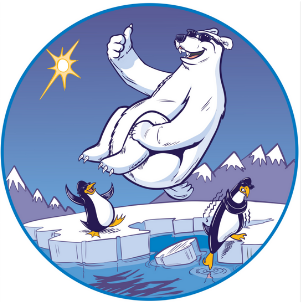The Science & Use of Cold Exposure for Health & Performance
Andrew Huberman, a renowned neuroscientist and host of the Huberman Lab Podcast, delves into the benefits and methods of deliberate cold exposure in Episode #66, titled “Use of Deliberate Cold Exposure for Health and Performance.” This article summarizes the key points from the episode, providing actionable insights into how to safely and effectively incorporate cold exposure into your routine.
Safety First
Safety is paramount when practicing deliberate cold exposure. Avoid dangerous bodies of water and never engage in hyperventilation before or during cold immersion. Start with warmer temperatures and gradually lower them as your body adapts. Cold shock can occur, so it’s essential to prioritize safety, just like with any exercise routine.
How Cold Should It Be?
The ideal temperature for cold exposure varies among individuals. The key is to find a temperature that feels uncomfortably cold but is safe to stay in for a few minutes. For some, this might be 60°F, while others might prefer 45°F. The colder the water, the shorter the exposure time needed. For instance, significant dopamine increases have been observed after spending an hour in 60°F water, while a 20-second dip in 40°F water can boost epinephrine levels.
Methods: Ice Bath, Cold Shower, or Cryotherapy?
Most research favors ice baths or cold water immersion to the neck. These methods are most effective, but cold showers can also be beneficial and are more accessible. Cryotherapy, while available, is expensive and less varied in protocols, making it a less practical option for many.
Benefits of Cold Exposure
- Increase Energy and Focus: Cold exposure triggers the release of epinephrine and norepinephrine, enhancing alertness and focus. This heightened state of energy can be applied to both mental and physical activities.
- Building Resilience & Grit: Embracing the stress of cold exposure builds mental resilience. This process, known as ‘top-down control,’ involves the prefrontal cortex, enhancing your ability to cope with stress in everyday life.
- Enhancing Mood: Cold exposure induces prolonged dopamine release, which can elevate mood, enhance focus, and boost goal-directed behavior.
- Metabolism Boost: Cold exposure increases short-term metabolism as the body burns calories to maintain core temperature. It also promotes the conversion of white fat to metabolically active beige or brown fat, aiding in cold adaptation and sustained metabolic increases.
Protocol: A Basic Science-Supported Approach
11 Minutes Per Week: Aim for a total of 11 minutes of cold exposure per week, spread across 2-4 sessions lasting 1-5 minutes each. The water should be uncomfortably cold but safe to stay in for a few minutes. This minimal exposure can provide significant benefits.
The Huberman Lab “Counting Walls” Approach
During cold exposure, your mind may resist the challenge, urging you to exit the cold environment. Huberman suggests visualizing these mental barriers as ‘walls.’ Overcoming these ‘walls’ strengthens mental resilience. Aim to count and traverse a set number of ‘walls’ during each session, enhancing the mind-body connection.
The Søeberg Principle for Metabolic Enhancement
The Søeberg Principle, coined by Dr. Susanna Søeberg, advises ending cold exposure without immediately warming up. Let your body reheat naturally, which can increase metabolic benefits. Allowing your body to shiver during or after cold exposure can further enhance these effects.
Physical Recovery
Cold exposure can be an effective recovery tool after intense exercise, reducing muscle soreness and enhancing perceived recovery. However, cold water immersion immediately after training might hinder gains in muscle hypertrophy and strength. It’s best to wait 6-8 hours post-training or do it before a workout, unless the goal is purely recovery.
Timing: Day or Night?
Cold exposure heats up the body, which can disrupt sleep if done too close to bedtime. It’s best to practice deliberate cold exposure early in the day to avoid sleep disturbances.
Increasing Resilience
To maximize the resilience-building effects of cold exposure, move your limbs in the water to break up the insulating thermal layer. This increases the cold stimulus without lowering the water temperature, similar to slowing down weight movements to increase muscle tension.
Conclusion
Andrew Huberman’s cold plunge protocol provides a comprehensive, science-based approach to harnessing the benefits of deliberate cold exposure. By following these guidelines, you can enhance your energy, focus, resilience, mood, metabolism, and recovery. Remember to prioritize safety, start slow, and gradually increase the intensity as your body adapts.
